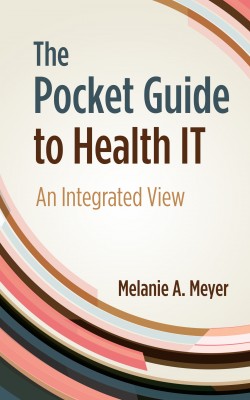 If you’ve recently had to avail yourself of medical services, you may have noticed that the health care industry seems to be lagging behind the rest of the world when it comes to information technology. Your local medical center may have the latest and greatest diagnostic machines and those fancy thermometers that clip on your ear, but it is likely that when it comes to processing requests for lab work, getting prescription orders to your pharmacy, or even accessing your medical records, the technology is muddled at best, and often seriously behind the times. Rest assured, however, that things are improving. Federal incentives and regulations as well as an increased availability of health care information technology (IT) are slowly but surely bringing doctors’ offices, hospitals, and medical centers into the information age.
If you’ve recently had to avail yourself of medical services, you may have noticed that the health care industry seems to be lagging behind the rest of the world when it comes to information technology. Your local medical center may have the latest and greatest diagnostic machines and those fancy thermometers that clip on your ear, but it is likely that when it comes to processing requests for lab work, getting prescription orders to your pharmacy, or even accessing your medical records, the technology is muddled at best, and often seriously behind the times. Rest assured, however, that things are improving. Federal incentives and regulations as well as an increased availability of health care information technology (IT) are slowly but surely bringing doctors’ offices, hospitals, and medical centers into the information age.
Melanie Meyer has called on her 25 years of experience in health care technology to write an informative guide to health IT. Though the book is short, it is not exactly a quick and easy read. Nonetheless, I think it is well worth the effort for anyone who wants to get a better idea of what health care IT is, how it is being implemented, and how it affects both patients and providers. Though much of the information in this book will be familiar to health care professionals, few readers, no matter what their fields, will have the complete picture. This book can help fill the gaps even for those who already know a great deal about the systems and processes discussed, and will be a useful introduction to those who are perplexed by the health care system. Charming graphics make it easier to follow some of the more Byzantine processes described in the text.
The book is well organized, following a typical patient from scheduling a medical appointment to receiving a bill. It explains how IT is used to schedule appointments, order lab work, arrive at diagnoses, allocate hospital beds, order medications, prevent potentially dangerous drug interactions and side effects, and much more. If you’ve ever puzzled over those mysterious medical billing codes, this book has the answers. Particularly fascinating are sections on how IT is used to source and allocate organs in transplant programs. I also found the section on medication management very interesting. The Pocket Guide To Health IT shows how computerized management of medications can reduce medication errors, the most common category of medical errors.
In discussing clinical decision support systems, Meyer says:
The reality is that data is at the heart of informed decision-making and key to successful outcomes and the volume of healthcare data is growing exponentially as the use of systems increases.
However, as this book demonstrates, that statement applies to all aspects of the bulky, fragmented, and complex industry that is health care. There is far more to health care IT than just electronic medical records. The Pocket Guide To Health IT will bring you up to speed on how the medical world is using information technology to save time, money, and provide you with better quality health care.
Links
Get an Editorial Review | Get Amazon Sales & Reviews | Get Edited | Get Beta Readers | Enter the SPR Book Awards | Other Marketing Services






















Leave A Comment